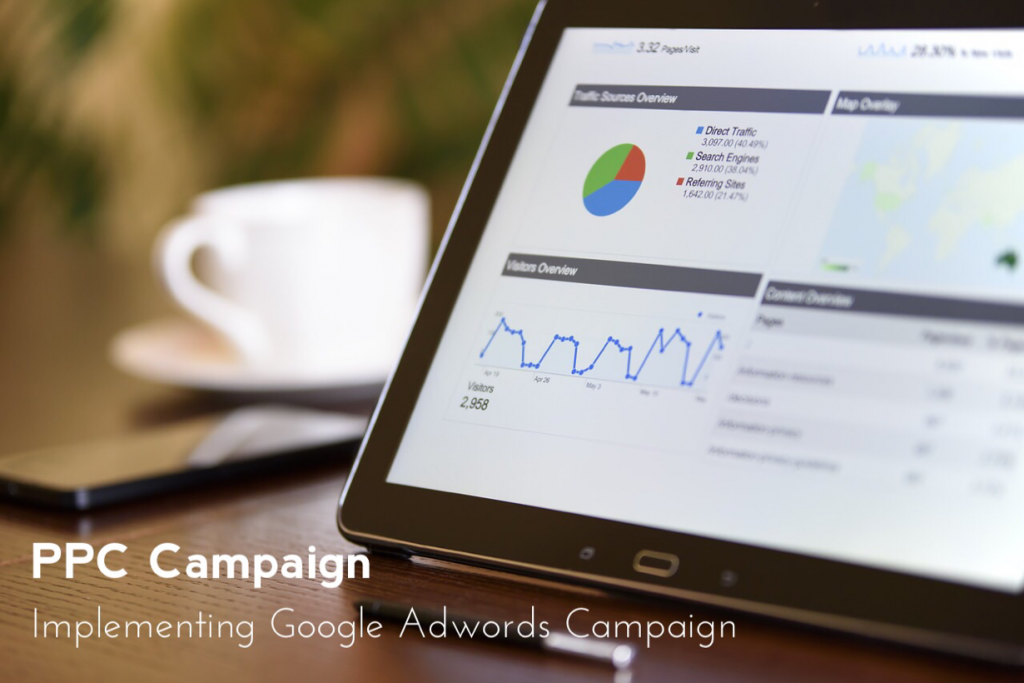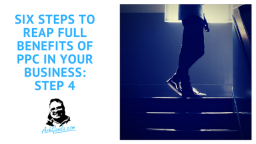Implementing a Properly Targeted Google Adwords Campaign

Based on the previous blogs of this series, you have learnt all the nuances of creating a successful PPC campaign. Thus, here, we give a checklist you must be doubly sure of to prepare before actually stepping into the technicalities of creating a Google Adwords Campaign:
- Understand your business and target audience
- Create customer persona map
- Know customer demand and corresponding keywords
- Know your competitors and follow their marketing techniques closely
- Create compelling PPC ads with irresistible offers
- Create congruent landing pages
Now, as you have made sure the above pointers are in line and your research is fully done, it is time to set up your first PPC campaign on Adwords with these simple 7 steps:
- Getting Started: Go to AdWords. Click on ‘Get Started Now’ button and sign up for an AdWords account. Click the ‘Create your First Campaign’ button.
- Setting campaign Name and Type: Now, you need to select your campaign type and name. Remember that all the ads you run in this campaign will have the exact same settings you apply to this campaign. Your campaign name is not visible to the customers. While AdWords can pick a default name for your campaign, it is recommended to pick a name yourself, specifically describing the campaign. This will help you in identifying the campaign when, after a while, you will have multiple campaigns. Picking an appropriate campaign type is essential for you as it will help you in customizing the campaign setup to meet your goals. It is always recommended that new advertisers choose ‘Search Network with Display Select’ campaign type. To know more about campaign types and their uses, click here.
- Picking Location(s) and Languages(s): A PPC campaign needs to be highly targeted so that you can reach people who are specifically looking for your products and services. This way, you can get the best returns on your PPC investment. So, pick the geographical locations your audiences are situated in. You can also decide how big or small the geographical reach should be. Also, pick languages your target audiences use the most. This way, Google can target those people who have selected that language in their browser’s language setting. To know how to pick appropriate location and language for your campaign, click here.
- Choosing Bid Strategy: Bidding amount is the one that Google can charge maximum you per day for an ads in the campaign. It can either be set up manually or let Google set it up automatically. In the start, it is always recommended to set up your daily budget manually so that even if your PPC campaign goes wrong anytime, your checking account doesn’t get emptied out. Understanding bid-and-budget strategy can be a bit tricky and Google provides some help here. We suggest setting maximum cost-per-click to a lesser amount for more number of keywords as every keywords is a separate market. Each keyword will fetch different set of audiences for you. With lesser amounts of bid on more number of keywords, you will make sure to reach higher number of people within your budget limit. Later on, you can increase bids on keywords that work well for your business.
- Setting Ad Extensions: Ad extensions let you add information like your contact information, location details, and links to the pages of your website to your PPC ad. It is really crucial to fill these up to enhance the value of your ad and improve its visibility. Learn more about these here.
- Creating Ad: Now, you need to create your first ad group and put your first ad. Make sure you add relevant keywords in the headline of your ad because people click on ads which contain keywords they are looking for. Headline can consist of 25 characters and your each word must be intelligently picked and strategically placed. The following second and third lines consist of 35 characters each. Here, you must add a feature and offer in each of the lines. Then, comes your display URL. Here, you can either put the URL of the specific landing page or the homepage of your website.
- Inserting Keywords: In the keyword field of your account, you need to put keywords. Now, your business might have hundreds and thousands of keywords you might think are relevant. But, only a few need to be put in to make sure your ad is highly targeted. So, start with the most relevant ones, check for results, and switch over to the other ones to compare results.
Your ad setting in AdWords PPC campaign is done. Now, you need to review everything to make sure your keywords and ad correspond and that your chosen cost-per-click is alright. Enter your billing information and you are ready to go. As soon as your payment is confirmed, your PPC campaign with Google AdWords will start running.
Make your #PPC faster, better and more organized with Google Sheets! https://t.co/37MDKvA4Bd pic.twitter.com/YTqYUCcgYt
— PPC Hero (@ppchero) March 12, 2017
Aftermath of the PPC Campaign:
Throughout the PPC campaign, starting from Day 1, you should start testing your ads. See whether they are able to fulfill your business goals. These tests should be wholesome, as in, these should span the entire funnel, starting from keywords and ad copy to designing of landing pages. But, make sure that you run every test exclusively by varying a single factor and keeping other elements constant for the time being. Conducting multiple tests on various elements will help you strategize better on every aspect of your campaign.
Also, you must implement conversion tracking. To know more about how to go about it, click here. This will help you understand how many and how effectively your PPC campaign is doing. You get to know this through action(s) people take when they come to your website, like sign-up, download, purchase, etc.
Through the above efforts made in a continuous, strategic manner, you can make sure that your campaign is always at its best. By monitoring and tweaking your campaign at least once a week, you can improve ads with low click-through rates. You can eliminate keywords that are costing you more and yielding lesser results, improve your ad copy, make your landing pages more effective, thereby enhancing your campaign’s efficiency. AdWords settings are very flexible, which can be tweaked anytime of its duration. So, make sure you always test, track, and improve your campaign.
What Is Inbound #Marketing [Infographic] #InboundMarketing #SEO #LeadGeneration #Blogging #Content #LandingPage #PPC #Mobile pic.twitter.com/JXXv5CJ2b0
— ipfconline (@ipfconline1) March 11, 2017
We hope this six-step guide to a successful PPC campaign helps you tremendously in effectively setting up and running your first paid marketing campaign online.
For any support and clarifications regarding PPC advertising and more to be successful in the digital world, contact us at ………..
Ash Ganda



